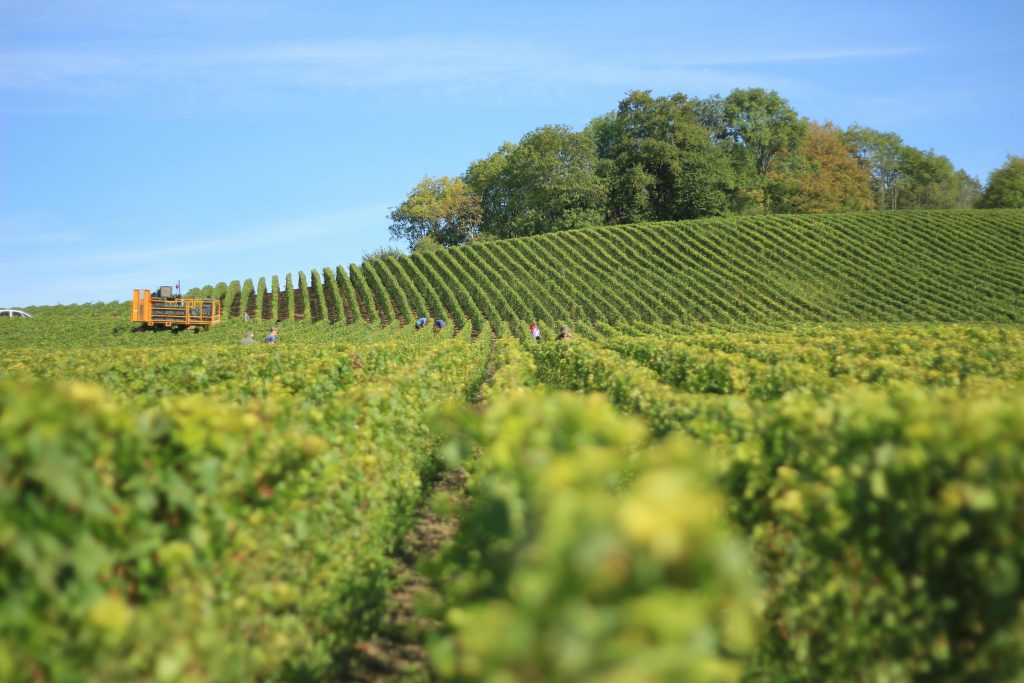
If you’re like me, you’ve probably seen “contains sulphites” on a wine label and thought: “Okay, that’s something — but is that all?” It turns out there’s a lot more going on behind the scenes. Winemaking involves many invisible helpers: additives, processing agents, chemical residues. Some are benign, some less so. Let’s lift the veil.
In this post I’ll walk you through what these additives are, why winemakers use them, what health concerns we should consider, and how to choose wines with fewer unwanted extras.
What Are Wine Additives, Anyway?
Before we look into it, let’s define what we mean by “additives” in wine. These are substances added after or during grape growing and fermentation to help with:
- colour
- clarity
- stability (so wine doesn’t spoil or go bad)
- taste consistency
- preservation
Some additives are natural (or derived from natural sources), others synthetic. Some are required by law to be disclosed, some not. Many people know about sulphites — but there’s more under the surface.
Common Invisible Additives & Residues
Here are several additives or chemical residues you might not expect, but which are commonly used in modern winemaking. Some are fairly harmless in small amounts; others are more controversial.
| Additive / Residue | What It Does | Where It Might Come From | Health or Other Concerns |
|---|---|---|---|
| Sulfites / Sulphur Dioxide (SO₂) | Acts as a preservative and antioxidant. Keeps wine from oxidizing and spoiling, helps with microbial control. | Added during fermentation, before bottling. Also naturally produced by yeast. | Many people worry about sulphite sensitivity (difficulty breathing, headaches, etc.). For most people, safe amounts are regulated. But still the most well-known “invisible” additive. Wikipedia |
| Potassium Sorbate | Prevents re-fermentation (especially in sweet wines), inhibits yeast & mold growth after fermentation has “ended.” | Used post-fermentation, often in sweet or sparkling wines to maintain stability. Wikipedia | Can impart off-flavours (sometimes kerosene-like) if misused. Some worry about long-term effects but typical amounts are quite low. |
| Fining Agents (animal or plant-based) | Clarify wine by helping suspended particles settle out so wine becomes clear. | Ingredients like egg whites, fish bladder (isinglass), milk casein, etc. | Allergy concerns. Also ethical / vegan concerns. These often don’t show on the front label. |
| Color & Flavor Enhancers (e.g. Mega Purple) | Boost colour intensity, mask inconsistencies, adjust mouthfeel. | Added concentrates or juice-based colourants. Mega Purple is a famous example. | It can mislead consumers about natural colour. Also adds sugar/residual sweetness. Some see it as “artificial” manipulation. |
| Pesticide Residues & “Forever Chemicals” (e.g. TFA) | Not exactly additives, but residues from vineyard treatments, agrochemicals, environmental contamination. | From sprays on vines, drift from nearby pesticide use, contaminated soil or water. For TFA, recent studies show a rise in wines with higher pesticide residue. | Health risks still under study. Some compounds persist long in environment. Some link to reproductive, metabolic, other effects. Organic wines tend to have lower levels. |
| Other Chemical Stabilizers & Enzymes | Adjust acidity, prevent unwanted fermentation, clarify, stabilize colour, remove off-odors. | Enzymes like pectic enzyme, yeast nutrients, tannins, acidifiers, etc. | Usually regarded as safe in regulated quantities. But more processing = more steps where things can go wrong or leave residuals. |
Why Winemakers Use These Additives
You might wonder if all this is necessary. The short answer: sometimes yes, sometimes for convenience or consistency. Here are the main reasons:
- Stability & shelf life: Without certain preservatives, wine can spoil, lose flavour, develop off-odours.
- Colour and clarity: Consumers expect a clear wine, consistent colour, no unexpected sediment. Fining agents and colour enhancers help.
- Taste consistency: Large producers want each vintage to taste similar, so additives help mask small variations (due to weather, grape quality, etc.).
- Cost & efficiency: Additives can speed up processes (clarifying, filtering) or reduce waste. They allow winemakers to manage risk (e.g. spoilage, fermentation going off).
- Regulatory compliance: In some regions, laws require certain treatments or allow certain additives. They also regulate maximum allowable amounts.
What We Know (and Don’t) About Health & Safety
People often ask: “Is wine with additives dangerous?” There’s no simple yes or no. It depends on the additive, the amount, the person, and how often someone drinks.
Here’s what evidence so far suggests — plus what scientists are still figuring out.
Known / Likely Effects
- Sulphite sensitivity: Some people (especially asthmatics) react badly even to small amounts of added sulphites. Can cause breathing issues, rashes, headaches. For most people, sulphite levels are safe.
- Pesticide residues: Chronic exposure, even in small amounts, can add up. Some pesticides break down into more toxic metabolites. Studies (e.g. Pesticide Residues in Grapes and Wine) investigate this: they show trace levels generally below regulatory thresholds, but concerns about cumulative impact. ScienceDirect
- “Forever chemicals”: Compounds like TFA (trifluoroacetic acid) don’t break down easily. Recent studies in Europe found alarming rises in TFA levels in wine, linking them with pesticide use and environmental contamination. These could have long-term risks. The Guardian
What We Still Don’t Fully Know
- The combined effect of many low-level additives and residues over many years. Most tests look at individual chemicals, not mixtures.
- Effects in sensitive populations (children, pregnant women, people with certain allergies or metabolic sensitivities).
- How winemaking practices (organic, biodynamic, natural) affect final additive / residue loads, and how much “cleaner” they really are in practice.

How to Read the Label & Choose Wines With Fewer Additives
Here are practical tips. They help you enjoy wine more consciously, with fewer surprises.
What to Look For on Labels
- “Contains sulphites” — this is required in many countries when sulphites exceed certain levels. But “no added sulphites” is different.
- Certifications: Organic, Biodynamic, Natural. These often restrict certain additives, pesticide usage, etc.
- Any mention of fining agents (if important to you ethically or allergenically). Some wines are labelled “unfined,” “vegan,” or “no animal products used.”
- Region & producer reputation. Smaller producers might be more transparent and use fewer manipulative additives.
Questions to Ask or Research About Invisible Additives in Wines
If you buy wine from a retailer or direct from winery:
- Do you use additives beyond sulphites (colour enhancers, flavouring agents, etc.)?
- What are your pesticide practices? Are you certified (organic / biodynamic)?
- How much labelling transparency do you offer? Do you post lab analyses or disclose techniques?
Choosing Wisely: Your Buyer’s Checklist
Here are quick rules you can follow to pick wines that are likely to have fewer invisible additives:
- Going organic or biodynamic often helps reduce pesticide and synthetic additive usage.
- Look for wines labelled “natural wine” but take with caution — definitions vary.
- Support small, artisanal winemakers. They often have fewer resources to use heavy chemical intervention and tend to value authenticity.
- Avoid wines with suspiciously intense or unnatural colour (deep purple, blackish reds that seem almost dyed). Could signal heavy use of colourants or Mega Purple-style products.
- Try wines that are “unfined” or “unfiltered” if clarity isn’t your top priority. Sediment can be a small trade-off.
Case Study: Forever Chemicals (TFA) & Recent Findings
This is especially timely. Researchers recently found that wines produced after 2010 have sharply rising levels of a “forever chemical” called TFA (trifluoroacetic acid). Wines from before 1988 had almost no TFA. The bigger the pesticide residue in the wine, the higher the TFA levels tended to be.
If you want more detail, I wrote an article on this: Forever Chemicals in Your Wine: The Alarming Rise of TFA. You can check it here: Forever Chemicals in Your Wine: The Alarming Rise of TFA.
This issue shows how something invisible, something you don’t see on the label or taste obviously, matters.
What You Can Do as a Wine Lover
You might feel powerless in the face of chemical additive lists, but you actually have more control than you think.
- Explore wines from producers who share details — tasting notes, lab results, methods. Transparency is powerful.
- Try organic or biodynamic wines and compare. Notice how they taste, smell, and feel. Is there a difference? Often yes.
- Support legislative change — push for better labelling, stricter pesticide laws, regulation of chemicals like PFAS that persist in environment.
- Moderation matters. Even if a wine has several additives, drinking responsibly helps reduce exposure.
Key Take-Aways
- Sulphites are not the only invisible players in wine. Additives like fining agents, flavour/color enhancers, pesticide residues, and stabilisers play big roles too.
- Some additives are relatively harmless in typical use; others carry more risks, especially if you consume often, have sensitivities, or drink wines with heavier intervention.
- Regulatory standards help, but they are not perfect. Things like TFA show how new contaminants are entering the picture.
- As a consumer, you can steer things: read labels, ask questions, try cleaner wines, support transparency.
Final Thought on Invisible Additives in Wines
Wine is wonderful partly because it’s complex, layered, poetic. But part of that complexity comes from substances we don’t always see or taste. If we shine a light on them, we make better choices.
So next time you pick up a bottle, look past “contains sulphites.” Think about what else could be in there—and decide if you want those invisible additions in your glass.
Here at The Little Cellar Wine Company, we believe in enjoying wine — but also knowing it. If you care about what’s in your wine (and not just what it tastes like), you’re in good company. For more info about what goes into wine (and what gets left out), head over to thelittlecellarwinecompany.com and dive into our other articles.